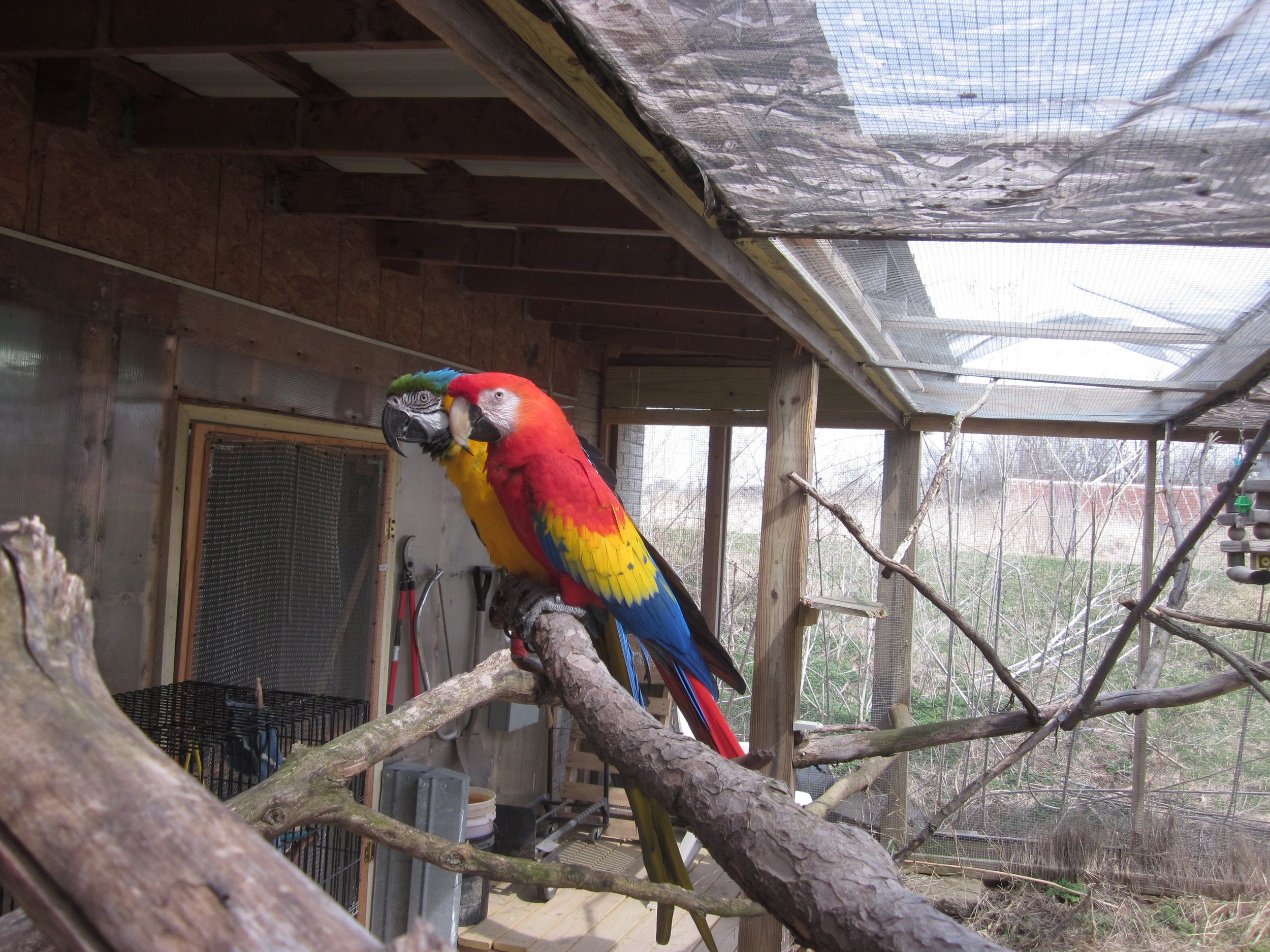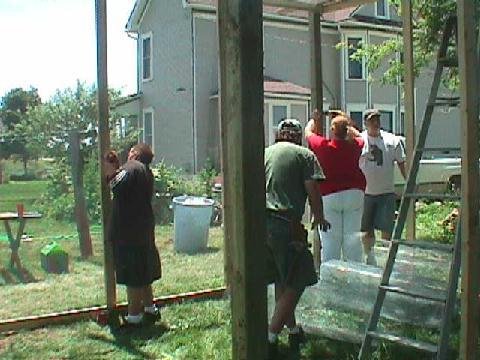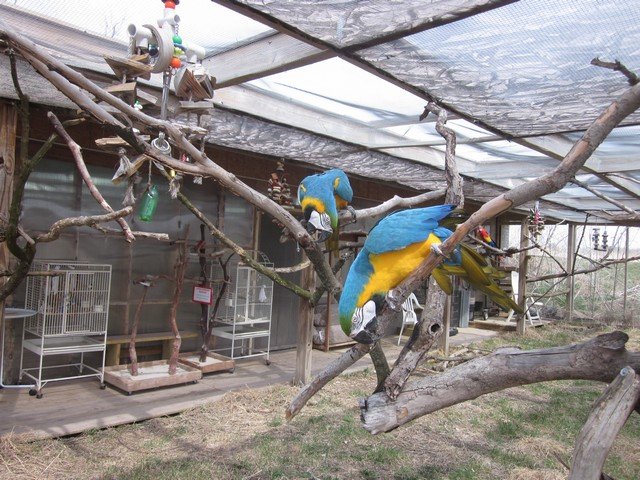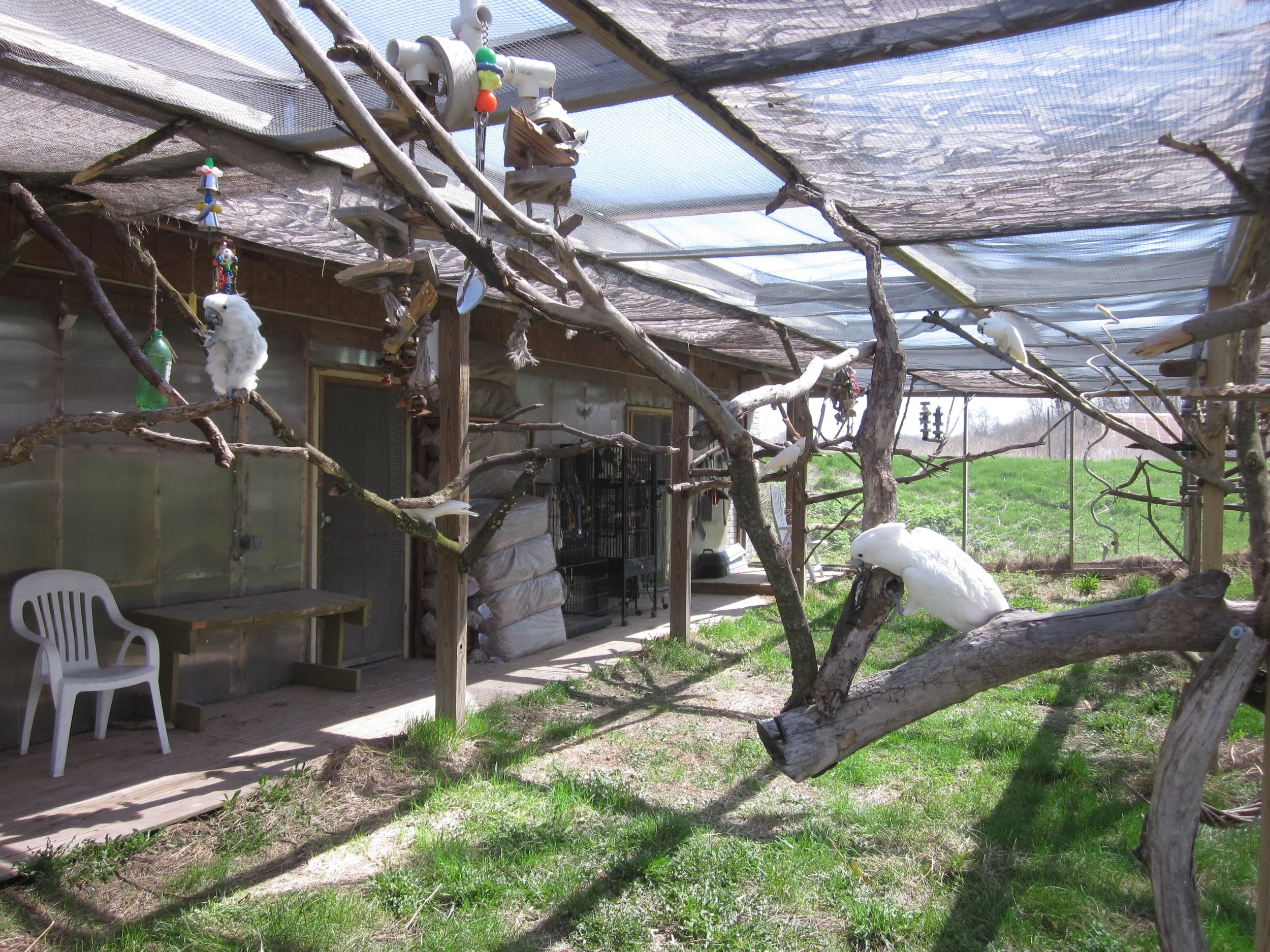
Our outdoor aviary gives our birds the freedom to exhibit natural behaviors that are difficult to do indoors, such as open air flying, chewing on whatever they want, and climbing.
How to Build Your Own Aviary
-

Framing the Walls
Set 4x4 treated posts every 4 feet. Plant them at least two feet deep, and as tall as you want the aviary. Add treated 2x4 framing the top and bottom.
-

Framing the Roof
Treated 2x4 or 2x6 (depending on how long the span is) every two feet. If the span is more than 8 feet, you’ll need support posts midway.
-

Covering the Walls
Lay 2 foot aluminum insect screen on top of the joists. Staple it down tightly, then nail 1x2 treated wood trim on top of that. You’ll want to work one width at a time so you can reach across to staple/nail. This will be on the outside of your aviary.
If you have serious varmint problems, add a layer of hardware cloth to the outside over the insect screen. Consider digging a trench around the base, installing concrete blocks, or sheet steel to prevent predators from digging their way inside.
-
Covering the Walls (con't)
On the underside of the joists (on the inside), attach 1/2” mesh hardware cloth, it will contain any sized parrots and macaws cannot bite through it. This is much easier with two or three people. DO NOT USE POULTRY WIRE, it is thin and can cut toes and faces. Staple first, then attach 1x2 UNTREATED trim strips. Parrots will be able to chew on this part so double check these are untreated.
-
Covering the Roof
This is the same process as the walls… Hardware cloth on the inside and insect screen on the outside. Attach rolls of burlap or camo net to half of the roof to provide shade from the sun and a safe spot from potential aerial predators.
-

Filling the Aviary
Now comes the fun part! Find branches of varying shapes and sizes, and attch them to the walls and roof joists using deck or sheet metal screws. Hang boings and swings from the ceiling joists (Using eye hooks is convenient for easy removal). Hang toys where they can be reached, install water dishes on the posts for accessibility. You may want to put these under the netting where wild bird droppings cannot fall into the water. Add a water fountain/feature and plantings of heavily shreddable safe plants, like bamboo, willow, or whatever grows well in your area.

Littles have a section just for them, so they don't get tangled up with the big guys.

Casey grey likes to come out and nap in the sun.

Macaws and Amazons like to explore together!

Volunteers feeding the red birds treats. This is a great location to introduce birds under supervision.

Cockatoos enjoy coming out to stretch and socialize.

blue birds flock together.

Lots of branches allows them to move from location to location, and explore every inch of the aviary.

Cockatoos get to chew up everything when they're outside! Or inside... or anywhere they can get their beaks on something, really.

